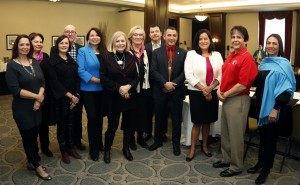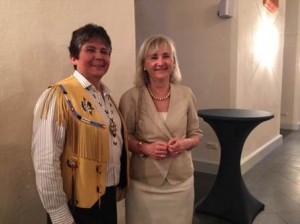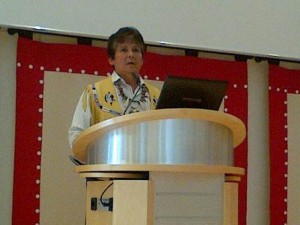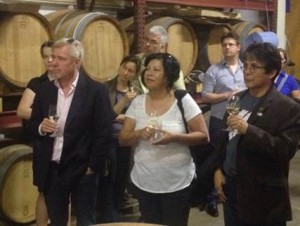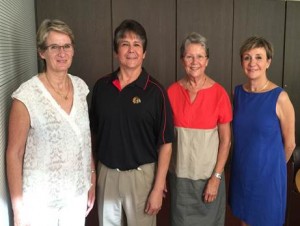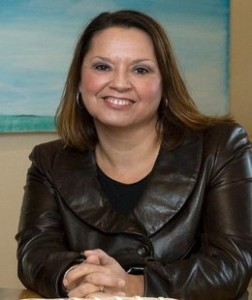Ottawa, ON – The National Indigenous Economic Development Board (NIEDB) has released their Recommendations on Northern Infrastructure to Support Economic Development. The recommendations address the significant infrastructure deficit in Canada’s North which acts as the predominant barrier to economic and business development in the region and the improvement of the quality of life in northern Indigenous communities.
“Not only is more infrastructure funding needed. The North should have its own specific strategy based on the recommendations we have developed for the Government of Canada,” said Hilda Broomfield Letemplier, of NIEDB’s Northern sub-committee.
The Board has found that because of the unique challenges faced in Northern regions, large, nation-building infrastructure is required alongside increased investment in community level infrastructure to support Northern communities. Enhancements to transportation infrastructure, improved connectivity and improvements to energy infrastructure are crucial for community and economic development in Northern communities.
The NIEDB is adding its voice to an increasing number of groups calling for new approaches and renewed investment in Canada’s infrastructure. Organizations such as the Canadian Centre for Policy Alternatives, the Canadian Chamber of Commerce, and the Federation of Canadian Municipalities, among others have all signaled a critical deficit in Canada’s infrastructure.
Despite the critical state of Northern infrastructure there is the potential to generate significant net economic and fiscal benefits, while developing sustainable economies. World demand for resources has brought global attention to Canada’s North. In 2011, total mineral exploration expenditures in the three territories were approximately $914 million, representing an 85 percent increase from the previous year.
The Board’s work on infrastructure in the North identified that each dollar spent on Northern economic infrastructure has the potential, if invested wisely, to generate $22 in economic and fiscal benefits.
To fully realise the economic potential of the North, bold infrastructure investments must be made. A report by GE Canada discovered that Northern business and community leaders consistently rank improving infrastructure as the “single most important” criteria for attracting investment and facilitating business development in remote communities.
The report builds on the Board’s research on infrastructure and economic development conducted throughout 2014-2015. Those findings were published in the two reports, Addressing the Infrastructure Needs of Northern Aboriginal Communities Report, and the Business Case for a Northern Economic Infrastructure System. In addition, the Board has consulted with Northern leaders at a roundtable on infrastructure and economic development.
To support Northern infrastructure and economic development the Board recommends that the Government of Canada address three broad areas:
- Coordinate investments in economic development infrastructure
- Increase infrastructure funding and financing
- Support Northern community capacity by funding research and comprehensive community planning
Based on the findings contained in the report, the NIEDB has come forward with the following recommendations. Please refer to the report for full recommendations.
Recommendation 1
It is recommended that the Government of Canada fund a system to facilitate coordination in infrastructure development.
Recommendation 2a
It is recommended that the Government of Canada work with the First Nations Fiscal Management Act institutions.
Recommendation 2b
It is recommended that the Government commission a feasibility study on establishing a Northern Indigenous investment entity, examining the potential benefits of a pooled approach to create a pan-Northern development fund.
Recommendation 3
It is recommended that the Government of Canada designate additional funding to establish a new North-specific infrastructure investment fund, in order to invest in infrastructure to support economic development in the North.
Recommendation 4
It is recommended that further work be undertaken by governments and key Northern leaders to examine alternate private investment models that apply to the North.
Recommendation 5
It is recommended that the Government of Canada consider adopting tax structures that take into account the added cost of operating in the North and would act to level the playing field for industry choosing to operate in the North.
Recommendation 6
It is recommended that the Government of Canada fund a publicly accessible, independent Resource Center to coordinate research into, and share information on, best practices in economic development in the North.
Recommendation 7
It is recommended that the Government of Canada provide dedicated funding and support to Aboriginal governments and Northern communities in order to support comprehensive community planning and provide access to tools that allow proactive engagement in natural resource development.
Northern infrastructure is inadequate to meet the needs of Northern Canadians, and it is limiting our ability to realise the great potential of the North. We are at a crossroads and action is needed now. ” – Hilda Broomfield Letemplier, Northern sub-committee.
Recommendations on Northern Infrastructure to Support Economic Development
The Recommendations on Northern Infrastructure to Support Economic Development build on past research into Northern infrastructure, including the Study on Addressing the Infrastructure Needs of Northern Aboriginal Communities that was conducted by the Conference Board of Canada’s Centre for the North on behalf of the NIEDB. The Fiscal Realities Economists’ 2015 study The Business Case for a Northern Economic Infrastructure System was also used extensively in the development of the recommendations. The ideas and strategies generated at the Roundtable on Northern Infrastructure and Economic Development hosted by the NIEDB in June 2015 were crucial in the preparation of the recommendations. The Board consulted extensively with Northern experts in the development of this report.
The NIEDB
Established in 1990, the NIEDB is a Governor in Council appointed board mandated to provide strategic policy and program advice to the federal government on Indigenous economic development. Comprised of First Nations, Inuit and Métis community and business leaders from across Canada, the Board plays an important role in helping the federal government develop economic policies and programs that are coordinated, accessible and responsive to the unique needs and circumstances of Indigenous Canadians.
For more information or to schedule an interview, please contact:
David Rodier
Hill+Knowlton Strategies
613-786-9945
david.rodier@hkstrategies.ca

